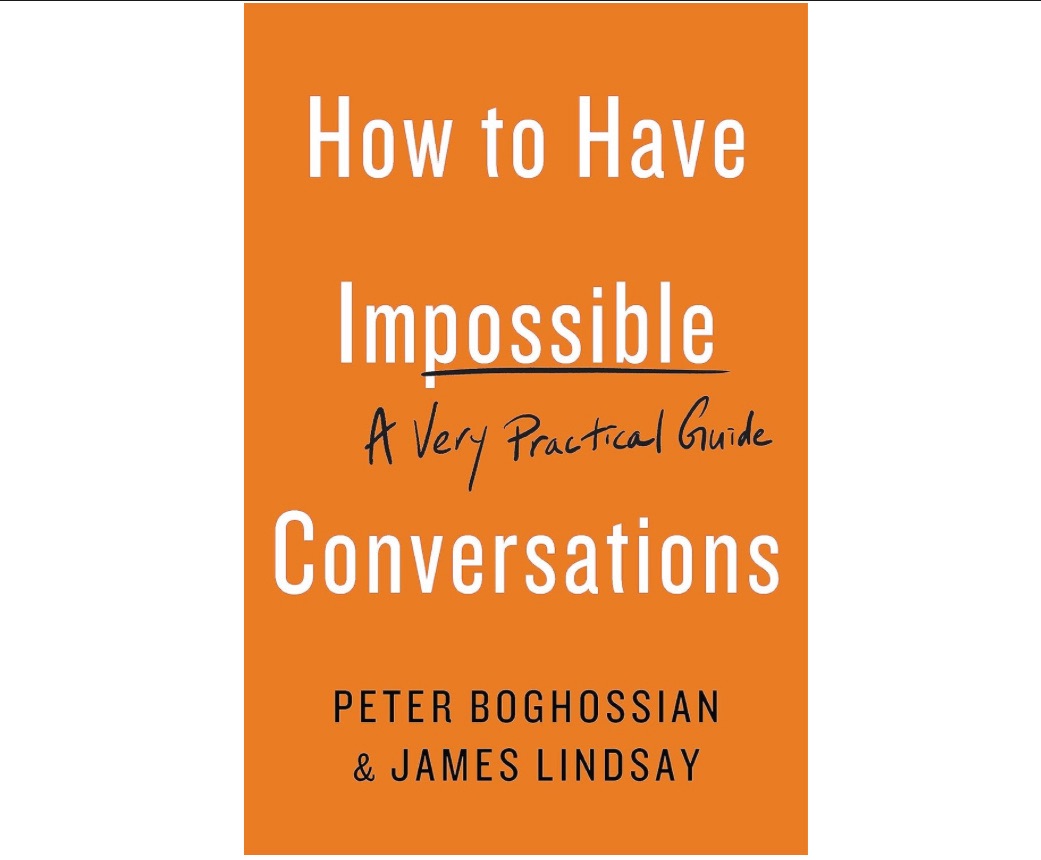“How to Have Impossible Conversations” by Peter Boghossian and James Lindsay offers strategies for navigating challenging discussions with empathy and understanding. The book addresses common cognitive biases, communication techniques, and approaches to managing conflict and disagreement. Boghossian and Lindsay emphasize the importance of intellectual humility, active listening, and fact-based reasoning in fostering productive dialogue. Through practical advice and real-life examples, the book empowers readers to engage in difficult conversations with confidence and integrity, ultimately promoting mutual understanding and constructive communication.

Here’s a detailed 10-point summary:
- Understanding Difficult Conversations:
- The book introduces the concept of “impossible conversations” – discussions fraught with emotion, disagreement, and polarization.
- Boghossian and Lindsay emphasize the importance of engaging in such conversations constructively rather than avoiding them.
- Principles of Productive Dialogue:
- The authors outline principles for productive dialogue, including intellectual humility, epistemic responsibility, and the recognition of cognitive biases.
- They stress the importance of adopting a collaborative mindset and seeking mutual understanding rather than winning arguments.
- Recognizing Cognitive Biases:
- “How to Have Impossible Conversations” explores common cognitive biases that can hinder productive dialogue, such as confirmation bias, motivated reasoning, and the backfire effect.
- Boghossian and Lindsay provide strategies for recognizing and mitigating these biases in oneself and others.
- Effective Communication Techniques:
- The book offers practical communication techniques for fostering understanding and reducing defensiveness.
- Boghossian and Lindsay discuss active listening, asking open-ended questions, and paraphrasing to ensure accurate comprehension.
- Navigating Emotionally Charged Topics:
- The authors provide strategies for navigating emotionally charged topics sensitively and respectfully.
- They advocate for empathy, patience, and emotional regulation to create a safe space for dialogue.
- Managing Disagreements and Conflicts:
- “How to Have Impossible Conversations” addresses strategies for managing disagreements and conflicts constructively.
- Boghossian and Lindsay advocate for focusing on facts, acknowledging uncertainty, and finding common ground where possible.
- Debunking Misinformation:
- The book discusses approaches for addressing misinformation and pseudoscience in conversation.
- The authors emphasize the importance of critical thinking, skepticism, and evidence-based reasoning in debunking false beliefs.
- Engaging with Different Perspectives:
- Boghossian and Lindsay encourage readers to engage with diverse perspectives and viewpoints.
- They discuss the value of intellectual diversity and the importance of respectfully engaging with opposing ideas.
- Addressing Polarization and Tribalism:
- The book explores the detrimental effects of polarization and tribalism on dialogue and societal cohesion.
- Boghossian and Lindsay offer strategies for bridging divides and fostering constructive dialogue across ideological lines.
- Applying Principles to Real-Life Scenarios:
- “How to Have Impossible Conversations” concludes with practical examples and case studies demonstrating the application of the principles discussed.
- Boghossian and Lindsay provide readers with actionable steps for navigating challenging conversations in their personal and professional lives.
In summary, “How to Have Impossible Conversations” equips readers with the tools and strategies needed to engage in difficult discussions effectively. Through principles of productive dialogue, recognition of cognitive biases, and practical communication techniques, Boghossian and Lindsay empower readers to navigate disagreement and polarization with empathy, understanding, and intellectual honesty.



